Weeds
There are more than 500 weeds that can be found in lawns in the UK. As well as looking unsightly in a lawn they compete with the grass for light, water and nutrients and therefore need to be removed. Some of the most common weeds in the UK include:
 |
DandelionDandelions are a very common perennial weed. If you plan to hand weed dandelions you have to ensure none of the root survives. They flower May to October, and if allowed to produce seed heads, due to infrequent mowing, the seeds are easily dispersed by the breeze. A systemic broadleaf weed killer is the best solution. |
|
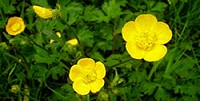 |
Buttercup and Creeping ButtercupA perennial weed spread by seed, runners and creeping stems. Buttercups are resistant to mowing, very aggressive and difficult to shift. The only real solution is to use a professional systemic weed killer. Creeping buttercup will flower with bright yellow petals anytime from May until August |
|
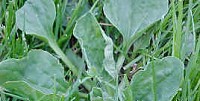 |
PlantainThere are various species of plantain, which are commonly found on thin growing lawns. This broadleaf weed lies flat to the ground and is tolerant to trampling and mowing. Flowering from May to September, it produces masses of seeds that will re-infect the lawn in later years. |
|
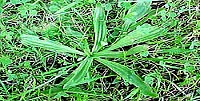 |
RibwortThis perennial herb covers the lawn, cutting out light and water to the grass. Spreads quickly, but can be removed fairly easily by hand or systemic weed killer. |
|
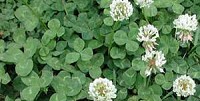 |
White CloverThrives in a dry lawn, is very aggressive and difficult to shift. Spread by runners along the ground surface, so mowing has no effect. The flowers are white and appear between May and October. The only real solution is to use a professional systemic weed killer, or keep the lawn well watered and remove weeds by hand as soon as you see them. |
|
 |
DaisyPerhaps the most common lawn weed. The daisy is a perennial and is effective at flowering and seeding in even the lowest cut lawns. The flowers appear all through the year, but most noticeably in late spring. It is easy to remove daisy’s by hand however a weed killer is more effective if large portions of the lawn are invested. |
|
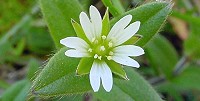 |
Mouse-Ear ChickweedThis annual can grow at an alarming rate up to 40cm long and is not killed by mowing. It has small white flowers (flowering April – September) and hairy oval shaped leaves. A selective weed killer is the best way to control this weed. |
|
 |
YarrowAnother difficult one to kill due to its very small leaves! This weed is poisonous to horses. The only real solution is to use a professional systemic weed killer – and even then it may take a couple of applications. |
|
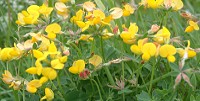 |
TrefoilVery common in summer this low growing annual weed is able to survive the closest mowing and can reach lengths of up to 50cm. It has 3 small, oval shaped leaves and a small yellow flower, appearing between May and October. Can be removed by hand or with a professional systemic weed killer – and even then it may take a couple of applications. |
|
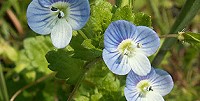 |
SpeedwellThis common weed with creeping stems, it is capable of rapidly spreading through a lawn. It has small lilac flowers, with a white centre and flowers from April to June. The only real solution is to use a professional systemic weed killer – and even then it may take a couple of applications. |
|
 |
ThistleEasily removed by a good quality herbicide – don’t try pulling them out as you will almost certainly leave the roots behind. |
|
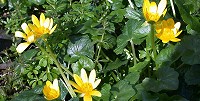 |
Lesser CelandineA low growing perennial with heart shaped leaves. Flowers between February and May with a single pure yellow flower. Repeated treatments with a selective weed killer will control this weed. |


